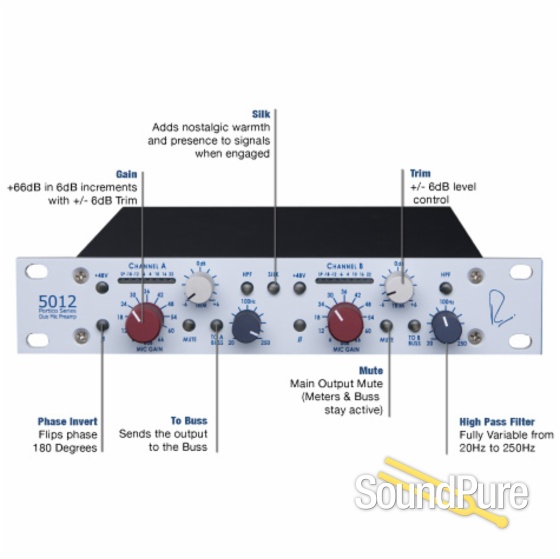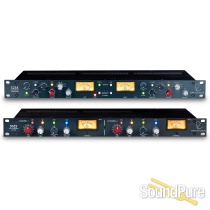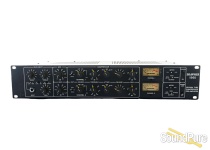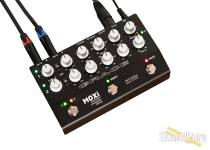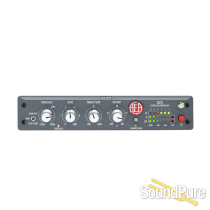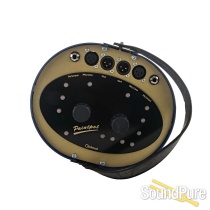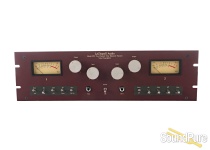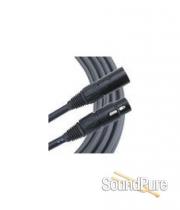-
Call Us Toll Free888-528-9703
-
Local/International (+1)919-682-5552
- Call Us! Toll Free! 888-528-9703
- Local / International (+1) 919-682-5552

Rupert Neve Designs Portico 5012 Stereo Mic Preamp From Neve
From Rupert Neve Designs' Portico series: 5012 - Dual Mic Pre-Amp
Available for Special Order
See something you like? This item is gone, but not forever. It can be special ordered, and even customized!
We can get it fast!
Because of our special relationship with Neve we can get this as fast, or faster than anyone in the industry. In some cases, we even have preferred build slots we can offer you.
Want to know when one lands?
Notify MeWant to discuss a special order?
Manufacturer's Description from Neve
The Portico 5012 is a dual channel mic pre featuring Neve’s custom input and output transformer designs. In addition to individually selectable phase, mute, phantom power and a fully sweepable high pass filter, the 5012 incorporates a “Silk” circuit which yields the rich warmth and presence of the renowned classic designs.
Microphone Input
The microphone input is balanced but not floating, being a variant of an instrumentation amplifer using a “Transformer-Like-Amplifier” (T.L.A.) configuration with a toroidal Common Mode Rejection Low Pass Filter that excludes frequencies above 150 kHz. The T.L.A. is followed by an actual input transformer permitting a full +25 dBu input signal to be handled at unity gain without an input pad over the whole audio spectrum. This combines the advantages of both an “Electronically Balanced” and true transformer input. When the Phantom voltage is switched off, this input serves as a very high quality line input with an impedance of 10,000 ohms.
Low Noise, Low Distortion Operation
Much care was given in designing the 5012 to produce as little noise and non-harmonic distortion as possible. Carefully implemented signal paths and Class A operation are a large part of the 5012′s sweet, whisper quiet performance. For more information, go to Mr. Rupert Neve’s Design Notes.
Why Transformers?
A complete discussion on transformers is out of place at this point but a technical discussion will be posted at a later date. Here it is helpful to review some of the essentials where it will be seen that a design needs to be viewed as a whole, not simply from the point of view of a single component.
The fine subtleties of circuit design relating to sonic performance are gradually becoming more clearly understood. For example, research has shown conclusively that frequencies above 20 kHz affect the way in which humans perceive sound quality. But, long before scientific evidence emerged a substantial body of musicians and engineers knew that equipment with apparently the same technical measurements could sound very different.
Incredibly small amounts of musically dissonant odd harmonics have a disastrous effect on the sound quality. Extraneous noise or interference that finds its way into a signal path seriously impairs performance of the whole chain.
Many control rooms make use of outboard gear that is not well protected from external signals. Poor grounding of such equipment can be a serious problem. “Electronically balanced” circuits much used in modern equipment, can give very good measurements on the test bench but they do not provide adequate rejection of the stray fields found in every working environment.
Input and output circuits must be freed from ground dependence so that only the “wanted” signal enters and leaves the processing path. Transformers are the ideal solution. The sweet and silky sound of my classic old favorite consoles was achieved with big transistors and large high quality transformers. Rupert Neve Designs Portico modules achieve similar quality today without the bulk or the cost.
In order that modules can work together as would be expected (i.e. in a proprietary console configuration) without producing hum, R.F. interference, or other interactions, the connecting interfaces, grounding, levels and impedances must receive careful attention. Each Portico module is a complete integral signal processor that delivers its specified performance independently. This is one of the reasons we use transformers.

About Manufacturer
Specifications
| Input: | ||
|
||
|
||
|
||
|
||
| Input Impedance: | 10,000 Ohms + or 20% | |
| Noise: | ||
|
Input terminated with 150 Ohms. | |
|
With Gain at Unity: | Better than 100 dBu. |
| With Gain at 66 dB: | Better than 62 dBu | |
|
|
Equivalent Input Noise (E.I.N.) | Better than 128 dBu |
| Frequency Response: | ||
|
@ 10 Hz, | 0.2 dB |
| @ 160 kHz | 3 dB | |
| Buss Output | ||
| @ 10 Hz | 0.2 dB | |
| @ 160 kHz | 3 dB | |
| High Pass Filter: | ||
|
Slope: | 12 dB/Octave. |
| Gain: | ||
|
||
| Trim: | ||
|
||
| Maximum Output Level: | ||
|
||
| Mute: | ||
|
||
| Total Harmonic Distortion and Noise: | ||
|
@ 1kHz, +20 dBu output level, no load: |
Better than 0.001%. |
|
Approximately 0.2% Second Harmonic | |
Main Output |
@ 20Hz, +20 dBu output level, no load: |
Better than 0.01%. |
|
@ 1kHz, +20 dBu output level, no load, measured at the output: |
Better than 0.002%. |
| SILK: | ||
|
||
| Buss Output: | ||
|
||
| Crosstalk: | ||
|
Better than 90 dB @ 15kHz. | |
| Phantom Power: | +48 Volts DC +/- 1% | |
| Main Power Required: (From External Power Unit) | Voltage Range, | 9 to 18 Volts DC. |
| Current consumption: | @ 9VDC = 1.3 A typical | |
| @12VDC = 1A typical | ||
| @15VDC= 800 mA typical | ||
| @18VDC= 650 mA typical | ||
| Rear Panel Power Connector: | 5.5mm X 2.1mm DC jack, Center Positive | |
